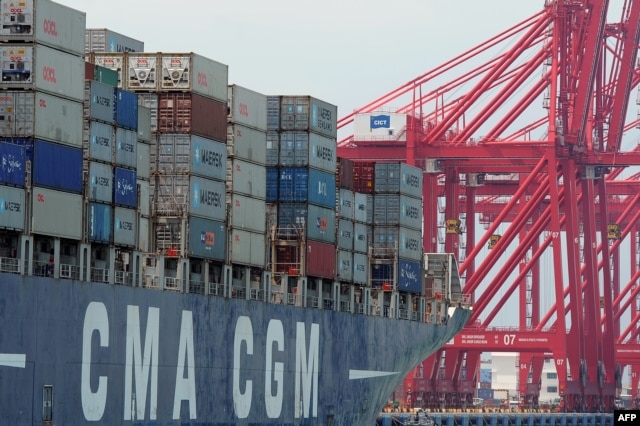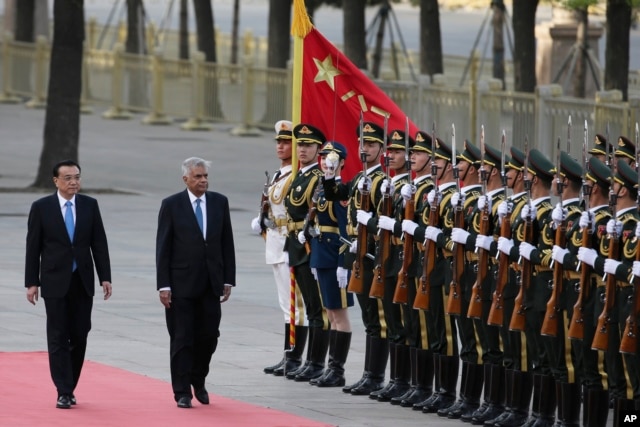The Sri Lankan leader signed several other deals during his trip for railway, road, port and airport projects that would be constructed by Chinese companies in his country.

The project has been the main point of contention between the two countries since March of last year, when Wickremasinghe stalled the project soon after coming to power. “We welcome the resumption of the Colombo Port City project, and stand ready to work with Sri Lanka to push forward the construction steadily,” Chinese Premier Li Keqiang said, underlined the importance of the decision.
Debt trap
Analysts said the Sri Lankan leader’s decision to resume work on the project is a desperate measure to stop his country from heading towards a debt trap. Sri Lanka is finding it extremely difficult to raise fresh funds from the world market after international ratings firms Fitch and Standard & Poor’s reduced the South Asian nation’s credit rating in February and March.
Sri Lanka wants China to reschedule past loans amounting to about $5 billion, and extend fresh loans. This includes Chinese finance for $1.6 billion to spend on a seaport and an airport in Hambantota, the home region of former Sri Lankan President Mahinda Rajapaksa, who was known to be close to China.
Financial problems and the need for infrastructure funding were the main reasons behind Wickremasinghe’s decision to restart the Colombo Port City project, according to Weerakoon Dushni, deputy director at the Institute of Public Policy in Colombo. “Managing loan repayments is a major problem. Nearly half of Sri Lanka’s external debt has been raised on non-concessional and commercial terms,” she said adding, “We need to engage with China both in political and economic terms.”

Some experts believe Sri Lanka has approached China for help because India and the United States failed to provide assistance. “The major task for Sri Lanka’s current government is economic development. Yet after its attempt to reduce its reliance on Beijing, Colombo has realized that there is no alternative,” Zhao Gancheng, director of South Asia Studies at the Shanghai Institute for International Studies told the Global Times newspaper. “Over the past year, neither India nor the U.S. has provided it with attractive mega-projects that China did. It is therefore natural for Sri Lanka to turn around and embrace China again,” Zhao said.
Indian Ocean connectivity
He also said Sri Lanka is trying to use its location on the Indian Ocean to attract Chinese investments. “Apart from the already existing cooperation, including the construction of Hambantota Port, Sri Lanka is now expecting to use its own geographical position to ink more new joint programs with China,” said Zhao.
China needs Sri Lanka to get access to the Indian Ocean, which has an heavy presence of Indian and U.S. navies, for both military and commercial reasons. It is pouring $46 billion on a corridor project that would connect the Chinese border in Xinjiang to the Gwadar port on the Arabian Sea in Pakistan, 1200 kilometers away.
“Sri Lanka is in the midst of important sea routes. China is engaging with Sri Lanka partly because of strategic reasons. Besides, it is focused on the ‘One Belt, One Road program,’ in which Sri Lanka can have an important role,” said the Institute of Public Policy’s Dushni.
Important question
An important question is whether Sri Lanka really needs the China backed projects.

“The Chinese funded airport in the Hambantota area has been used to store gains. The Hambantota seaport, which was also financed by China, has remained largely unused,” Smruti Pattanaik, research fellow at the Institute of Defense and Strategic Studies in New Delhi, said.
Chinese backed projects, including the airport and sea port in Hambantota and the Colombo Port City plan, have been a matter of raging political controversies in Sri Lanka in recent years. During the 2014 elections, opposition leaders accused the associates of then-president Rajapaksha of taking bribes from Chinese companies. Those critics are now in power.
“The Sri Lankan government is in a real dilemma. It is almost bankrupt and needs money to run the economy,” Chaminda Hettiarachchi, lecturer and researcher at the Colombo University, said. “Sri Lanka needs Chinese money at least in the short term. But Chinese projects are not useful to the Sri Lankan people.”
